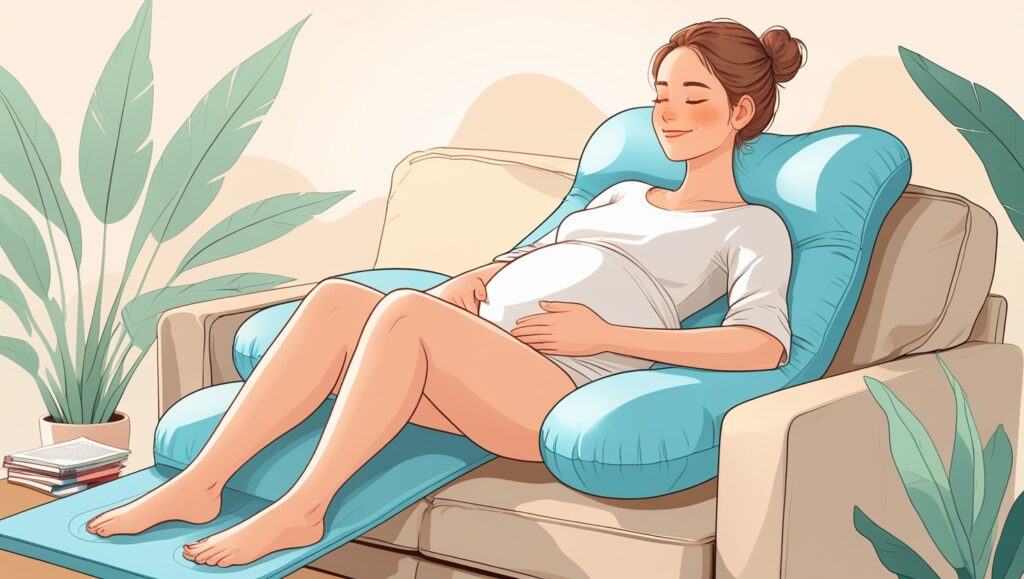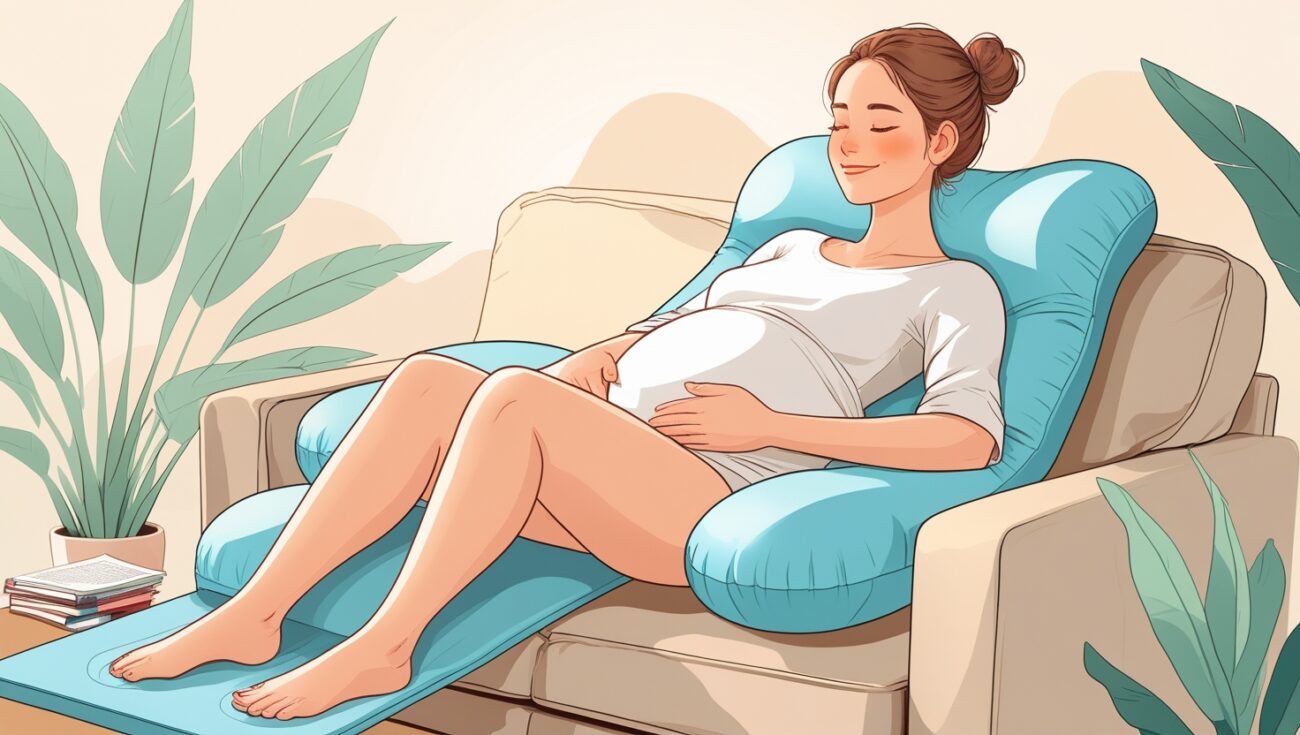How Pregnancy Pillows Can Reduce Swelling in Your Legs and Feet
When I was pregnant, one of the most uncomfortable symptoms I dealt with was swelling in my legs and feet. By the end of the day, my ankles felt huge, and it made it hard to rest. That’s when I discovered how a pregnancy pillow could help reduce swelling and make me feel so much better.
In this post, I’ll explain why swelling happens during pregnancy and how the right pillow can make a big difference.

Table of Contents
Why Swelling Happens During Pregnancy
Swelling (also called edema) is common during pregnancy because your body is holding onto more fluid than usual. This extra fluid tends to collect in your lower body, especially your legs and feet, thanks to gravity.
I noticed it got worse after standing or sitting for long periods. My doctor reassured me it was normal, but I still wanted a way to feel more comfortable at night.
How Pregnancy Pillows Can Help Reduce Swelling
The key to reducing swelling is improving circulation, and pregnancy pillows are perfect for that.
1. Elevating Your Legs
By using a pregnancy pillow to slightly elevate your legs while you sleep, you help fluid flow back toward your upper body instead of pooling in your ankles.
➡️ My favorite for leg elevation: PharMeDoc U-Shaped Pregnancy Pillow. You can rest your legs comfortably on the sides of the pillow.
2. Keeping You on Your Side
Side sleeping (especially the left side) improves circulation and helps your body flush out extra fluid. A full-body pillow can keep you from rolling onto your back while you sleep.
➡️ The Leachco Snoogle C-Shaped Pillow is a great option for side sleepers.
3. Relieving Pressure Points
Pregnancy pillows take pressure off your hips and lower back, which can also improve blood flow. This helps prevent swelling from getting worse overnight.
➡️ For targeted support, the Hiccapop Pregnancy Wedge Pillow works wonders.
Extra Tips for Reducing Swelling
- Drink plenty of water during the day to help your body release excess fluid.
- Avoid standing or sitting in the same position for too long.
- Do gentle stretches or ankle circles before bed to improve circulation.
- Wear compression socks if your doctor recommends them.
➡️ You can also pair your pregnancy pillow with a leg elevation pillow for extra relief.
My Final Thoughts
Using a pregnancy pillow to elevate your legs and support side sleeping can make a huge difference in how your legs and feet feel during pregnancy.
Personally, I loved the PharMeDoc U-Shaped Pillow because I could prop my legs up on the sides while also supporting my belly and back.
➡️ Click here to shop my favorite pregnancy pillows for reducing swelling on Amazon
Trust me, your feet will thank you.
When I first noticed swelling in my legs and feet, I thought it was just something I had to live with. But once I started using my pregnancy pillow to elevate my legs each night, I saw a huge difference by morning. Even just a small lift kept the fluid from pooling in my ankles.
One trick that worked well for me was to rest my calves on the sides of a U-shaped pillow while lying on my back for a short time before sleep. This allowed gravity to help drain excess fluid and made my legs feel lighter.
I also found that side sleeping with a pillow between my knees reduced the swelling. It kept my hips aligned and improved circulation in my lower body, which made my feet feel less tight and sore.
If you’re traveling or don’t have a big pregnancy pillow, a wedge pillow behind your knees or ankles works too. I used the wedge on nights when I wanted something smaller and easier to move.
I made the mistake at first of using pillows that were too soft. They would flatten out overnight and no longer keep my legs elevated. Switching to a firmer pillow with good support kept the elevation consistent.
Another hack I learned was to rotate sides during the night. Spending the entire night on one side made my hip ache and didn’t help circulation as much. The pregnancy pillow made it easy to switch sides without waking up fully.
I also used my pregnancy pillow during the day while watching TV or reading. Propping my legs on the pillow for even 20–30 minutes helped reduce swelling and kept it from getting worse by bedtime.
Pairing the pillow with gentle stretches and ankle rolls before bed made it even more effective. I would sit on the edge of the bed, rotate my ankles, and then lie down with my legs elevated.
Another benefit was that the pillow supported my entire body, not just my legs. Reducing pressure on my hips and back also helped my circulation, which played a role in decreasing swelling overall.
I found that drinking enough water during the day was essential. The pregnancy pillow kept me comfortable enough at night so I wasn’t tempted to prop my legs down just to run to the bathroom less.
If you’re concerned about swelling, don’t be afraid to use multiple pillows together. I sometimes combined my U-shaped pillow with a small wedge under my ankles to get the perfect angle.
Finally, remember that a pregnancy pillow is a long-term investment. Not only did it help me with swelling during pregnancy, but I continued to use it postpartum to keep my legs elevated and comfortable during recovery.
I also learned that using the pillow consistently each night makes the biggest difference. If I skipped a night, I noticed the swelling would return, so staying consistent with leg elevation really helped keep it under control.
Another tip is to combine your pregnancy pillow with compression socks if your doctor recommends them. Elevating your legs while wearing compression socks can maximize circulation and reduce fluid buildup even faster.
Lastly, try using your pregnancy pillow for short breaks throughout the day, not just at night. Even propping your legs up for 15–20 minutes in the afternoon can keep swelling from getting worse by the evening.

